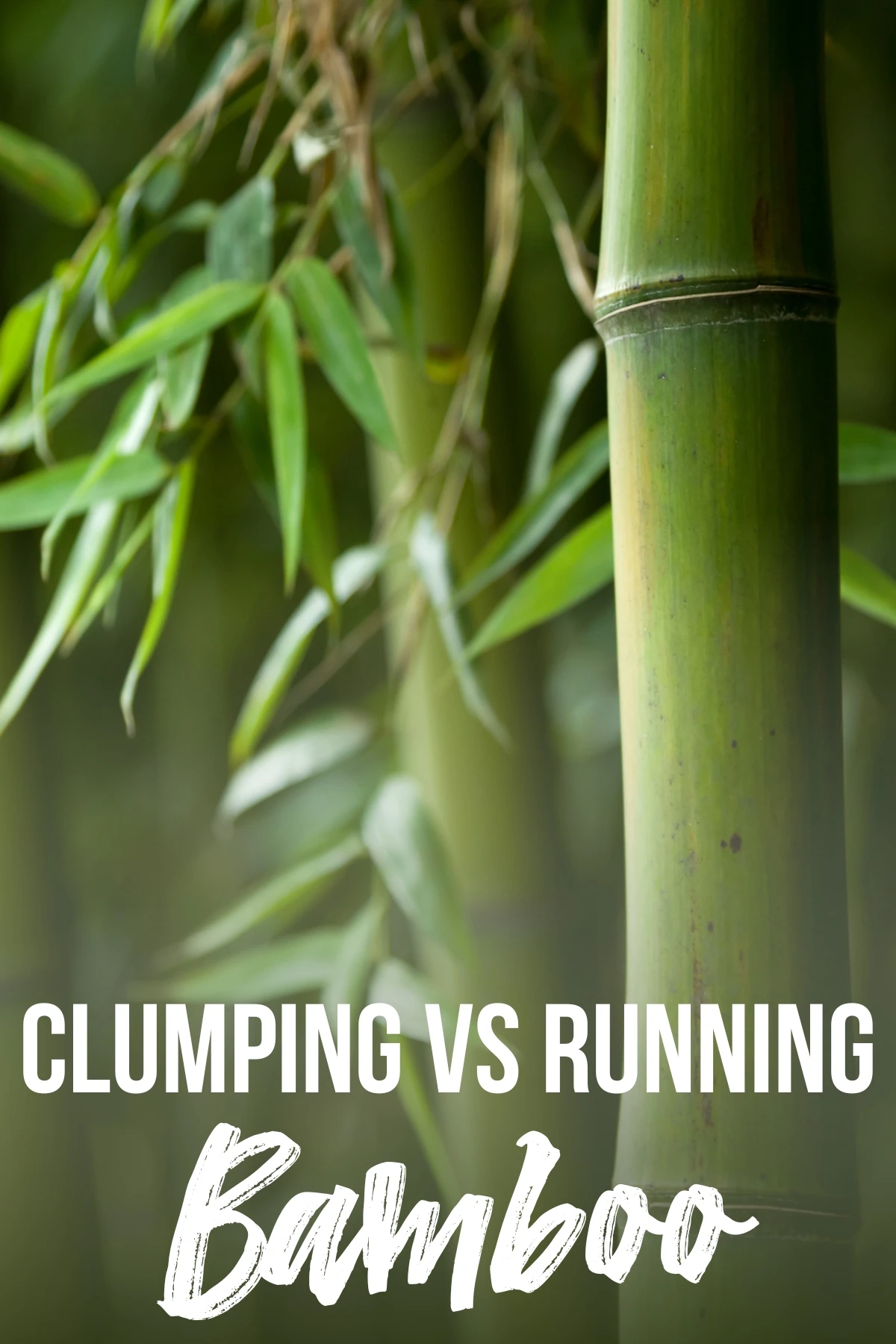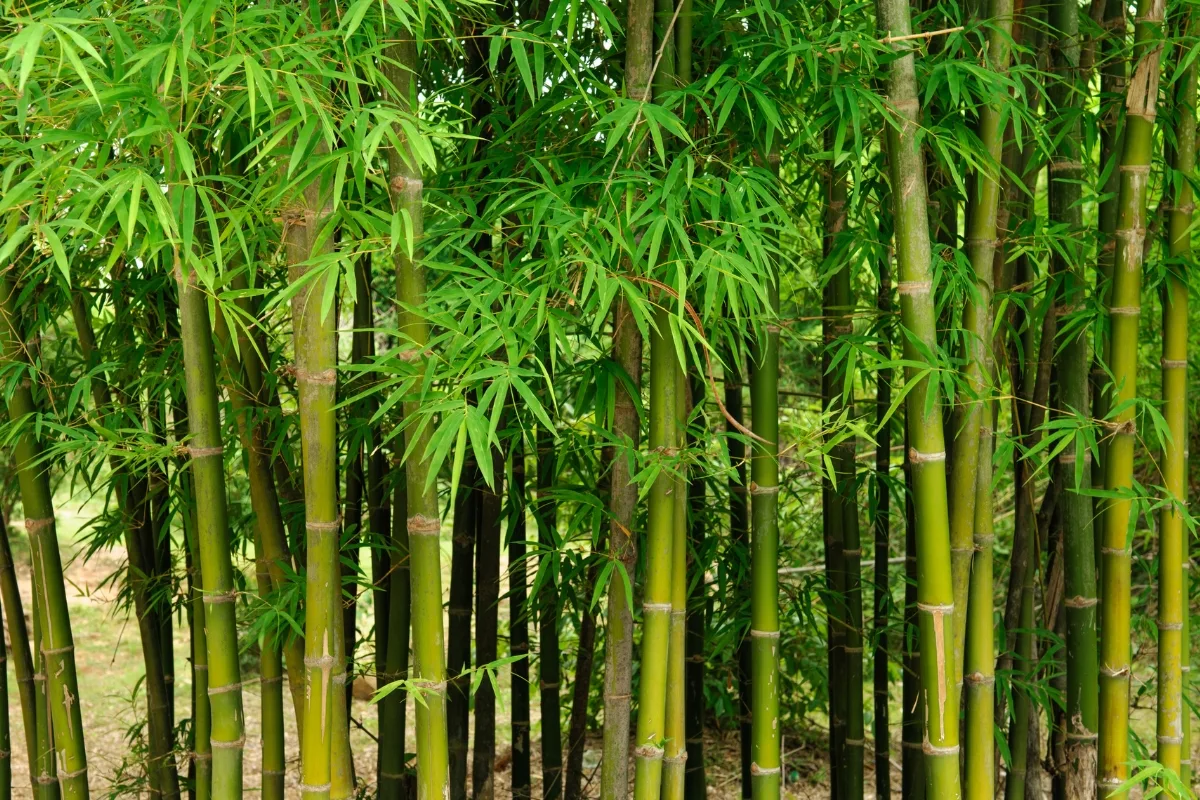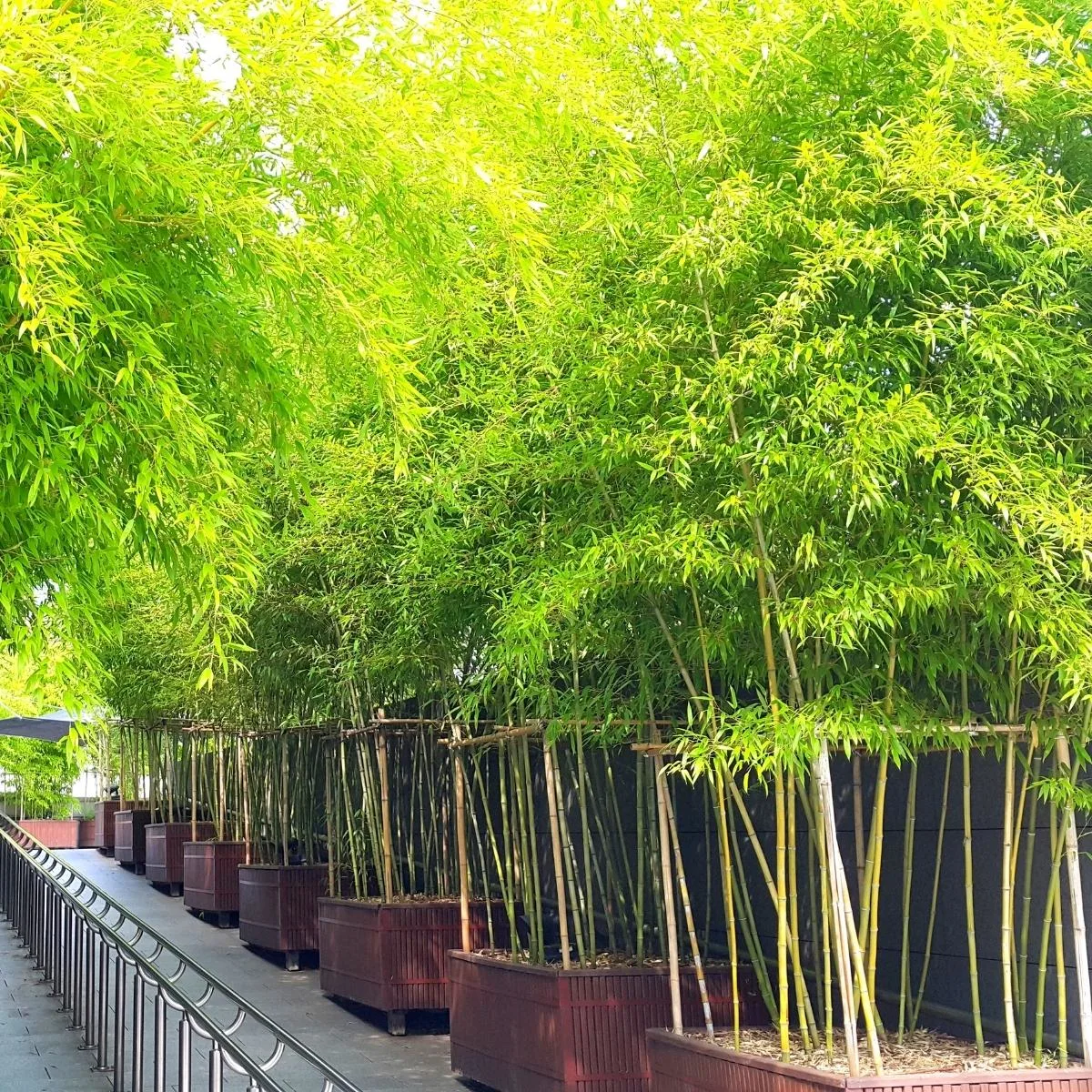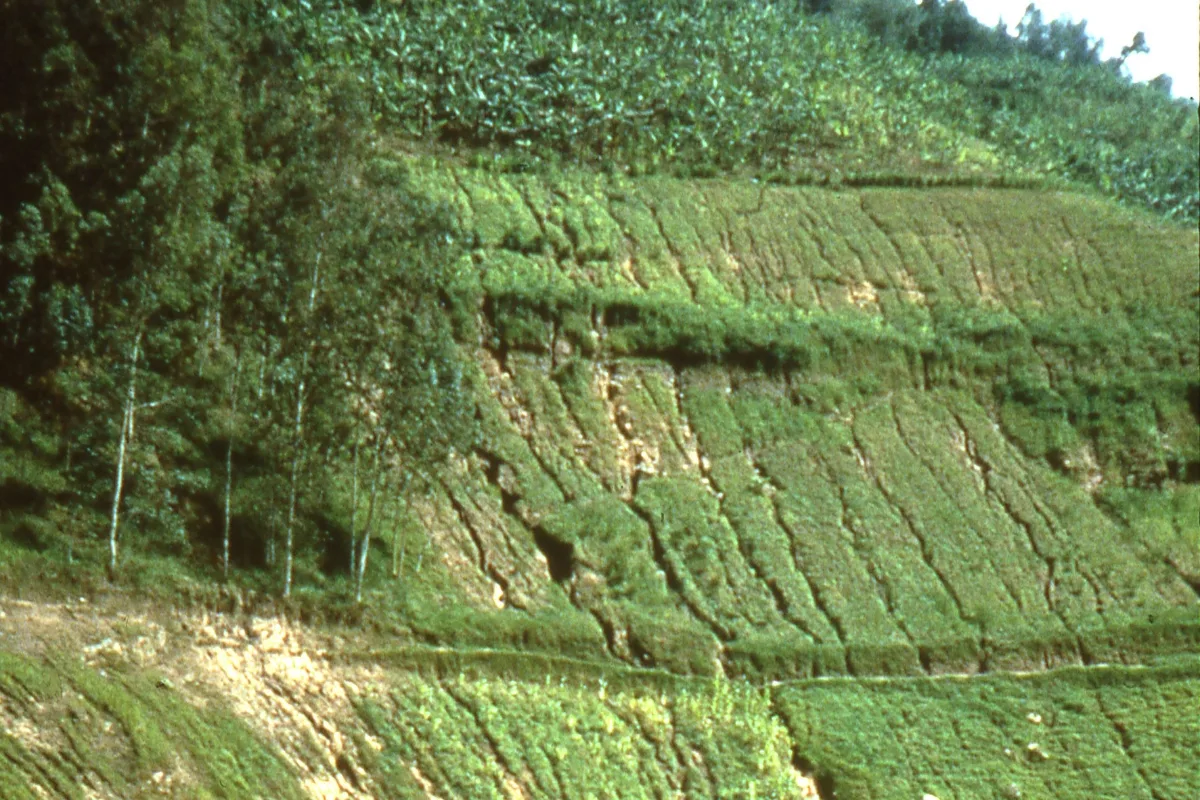Learn the difference between clumping vs running bamboo before you plant it in your garden, or it might take over your whole yard!

Bamboo, a subfamily of grasses, consists of around 1,400 species. If you're considering adding it to your garden or landscape, it's essential to understand the differences between clumping and running bamboo.
While they look similar, their growth patterns and potential impact on your garden can be quite different!
By considering factors such as growth patterns, invasiveness, and maintenance requirements, you can ensure the bamboo you choose will enhance your landscape without causing unwanted complications.
This post contains affiliate links for your convenience. Purchases made through these links may earn me a small commission at no additional cost to you.
Types of Bamboo
If you have your heart set on a natural screen of bamboo, you need to do your research first. You don't want to accidentally plant a 25 foot tall grove of bamboo in a townhouse garden when all you wanted was a little clump in the corner!
Clumping Bamboo
Clumping bamboos, also known as non-spreading bamboo, grow in tight clusters. They are favored for their non-invasive growth pattern, making them ideal for small gardens.
These bamboos have what is called pachymorph or sympodial rhizomes that grow close to the main plant, causing the plant to expand slowly over time.

To maintain your clumping bamboo, proper spacing and regular pruning are necessary to keep your garden looking neat and tidy. However, you don't need to worry about them spreading uncontrollably or invading your neighbor's property.
Some popular clumping bamboo species include Bambusa, Chusquea, and Fargesia. Fargesia robusta and Fargesia Rufa are the most common varieties, and I've had the latter growing in my garden for five years without any issue. They're both cold tolerant and grow to a reasonable size.
Running Bamboo
In contrast, running bamboos have a vigorous growth habit. They have rhizomes which extend very quickly outward from the main plant parallel to the ground. As a result, these bamboos can spread rapidly, cover large areas, and sometimes be classified as invasive plants.

To control the spread of running bamboo in your garden, you must take extra precautions, such as using a rhizome barrier, which helps to limit their growth to a specific area. Regular pruning and monitoring are essential to keep the plant in check and prevent it from becoming an issue.
Running bamboos come in various sizes and are suited to different climate zones. Some popular running bamboo species include Phyllostachys, Pseudosasa, and Sasa.
Maintenance and Containment
Once you have your bamboo in the ground, proper maintenance can help keep it in check and looking its best.
Pruning Techniques
Pruning is essential to maintaining the health and appearance of both clumping and running bamboo. Regularly remove any dead, damaged, or weak canes to keep your bamboo thriving.
Begin by trimming the lower branches to create a more attractive appearance. In the case of clumping bamboo, trimming the smaller shoots at soil level will encourage the growth of larger, healthier culms. For running bamboo, be sure to prune its branches and rhizomes frequently to prevent it from spreading aggressively.
Ideal Barriers
Containment is crucial for running bamboo, which can spread rapidly if not managed properly. One way to contain running bamboo is by planting it in containers, helping to manage its growth within a confined space.

If you prefer to plant your bamboo in the ground, you can use a vertical rhizome barrier made of a 30-40 mil thick plastic material, such as Bamboo Shield. It should be installed at least 22-30 inches deep around the planting area's perimeter.
Common Uses for Running Bamboo
So why would you plant running bamboo instead of clumping? Here are a few common uses for this spreading type.
Erosion Control
Running bamboo, with its extensive and aggressive root system, is fantastic for erosion control purposes. It can help stabilize soil on slopes and hold it in place, preventing erosion and reducing the risk of landslides.

If you're looking to address erosion issues on your property, consider planting running bamboo along the affected area, making sure to properly contain the plant to prevent it from becoming invasive.
Ground Cover in Large Areas
The quick growth and spreading habit of running bamboo make it ideal for creating privacy screens or hedges in wide open areas. If you have a lot of empty land, you may consider allowing it to be taken over by a bamboo forest instead of weeds.
Wind and Noise Barriers
Tall and dense stands of running bamboo can serve as windbreaks, protecting gardens and crops from damaging winds. They can deflect, absorb, and reduce wind speed, thus preventing potential wind-related damage.

Bamboo's dense growth is also good at absorbing sound waves. This makes it a natural noise barrier, which can be particularly useful near busy roads. While bamboo won't block all noise, it can help reduce the sound of a nearby highway.
Frequently Asked Questions
How can I identify clumping and running bamboo?
If you're buying bamboo at the garden center, check the tag and do some research on the variety first. To differentiate between clumping and running bamboo already in the ground, observe their growth patterns.
Is it possible for clumping bamboo to become running bamboo?
No, clumping bamboo will not become running bamboo because they are genetically different. Clumping bamboo and running bamboo belong to separate genera, with distinct root systems and growth habits.
Do I need a barrier for clumping bamboo?
Clumping bamboo is generally less invasive than running bamboo, so there's no need for a barrier. While they do expand gradually, they have a more predictable growth pattern and can be easily controlled if necessary.
Can running bamboo be grown in pots?
Yes, you can grow running bamboo in pots. Choose a large, deep container with good drainage to accommodate the spreading root system. You'll need to regularly prune the roots to keep the plant from outgrowing the container or spreading outside the pot.
